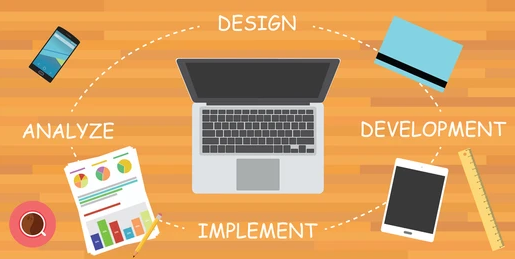
For the development of quality software, the software industry uses the Software Development Life Cycle. The SDLC is a framework comprising of iterative stages that define the tasks to be carried out in the software development process. It is a conceptual model that serves as a blueprint of detailed plans that explain how specific software will be developed, maintained, modified and upgraded. In fact, the SDLC explains the overall software development process.
Phases of SDLC

The SDLC process consists of seven phases-Planning, Requirements Analysis, Design, Coding, Testing, Implementation, and Support and Maintenance.
- Planning
- Requirements Analysis
- Design
- Coding
- Testing
- Implementation
- Support and Maintenance
Planning
The software development process begins with this phase. It is in this phase that the project is envisioned. The objective or purpose of the software is clearly defined and the objective statement is set for the project. Several parameters such as cost, time frame, tasks and resources are also considered in this phase.
Requirements Analysis
This is the second step in the SDLC lifecycle. In this phase the needs of the end users are analyzed and the product constraints identified. The business needs for the system are determined and possible solutions are evaluated to find the best solution that fulfills the project goals.
Design
The next stage is the Design phase. The technical architecture or the high-level design of the system is developed at this phase. Project risks are identified and the technologies that will be used for the project determined.
System design comprises the External design and the Internal design of the product
A. External Design
In the external design the system is described from the end-user’s perspective wherein the user interface is described in detail.
B. Internal Design
In the internal design the internal working of the system is discussed.Internal design can be further classified into Structural design, Data design and Logic design. The Structural design describes the code and its sub-divisions in detail. The Data design discusses the type of data used in the code and the Logic design defines the logical steps in various tasks.
Coding
The actual development of the system begins in this phase. Programmers write code to develop the system based on the requirements and specifications defined in the earlier phases.
Testing
In this phase, the system developed is executed with the intent of finding errors. This process is known as testing, Testing is a method to find defects, errors or gaps in a process, program or even a product, In other words, testing determines that the overall process is functioning based on the actual requirements.
Implementation
In the implementation phase the system is moved into production. It involves the on-site installation of the new system which includes training support during the roll-out period.
Support and Maintenance
After the system is implemented at the client side, the system is continually monitored and support is provided for any system modification as and when required. Testing during the maintenance will determine whether the system meets its specified objectives for maintainability.



